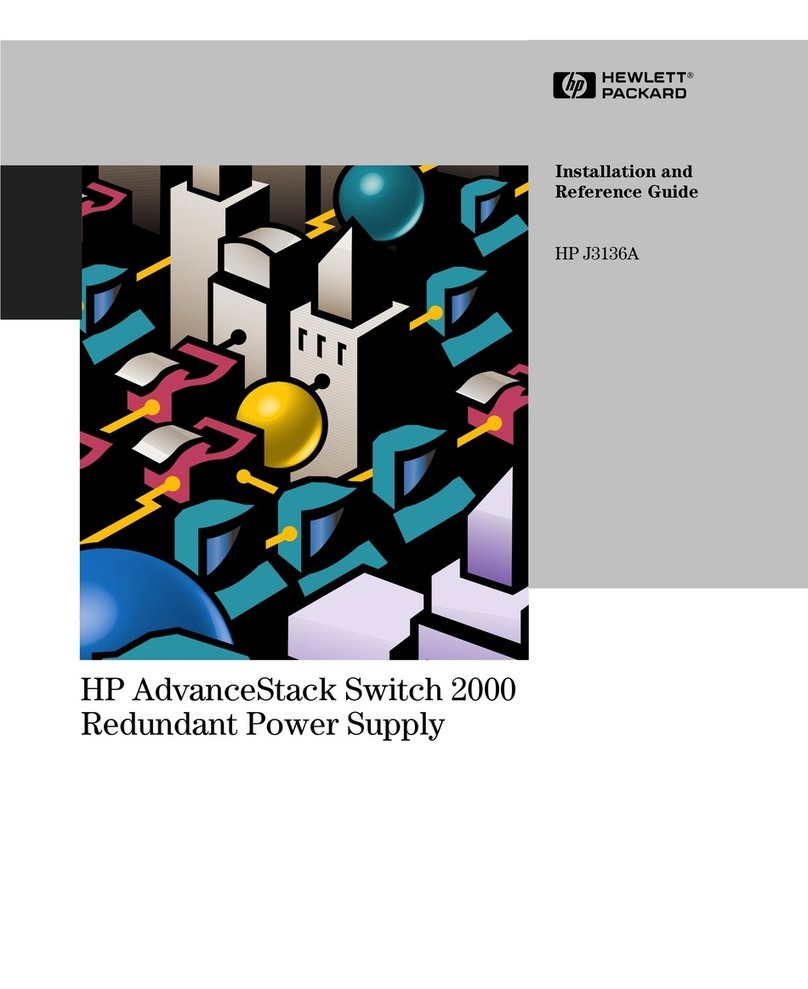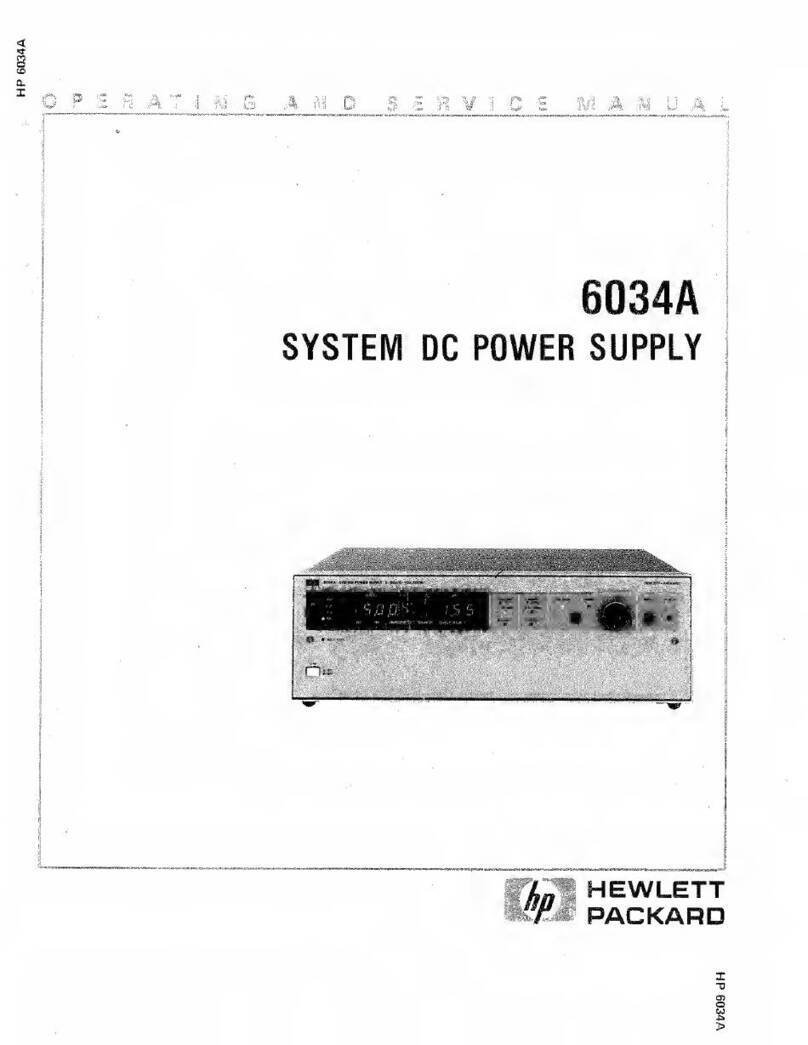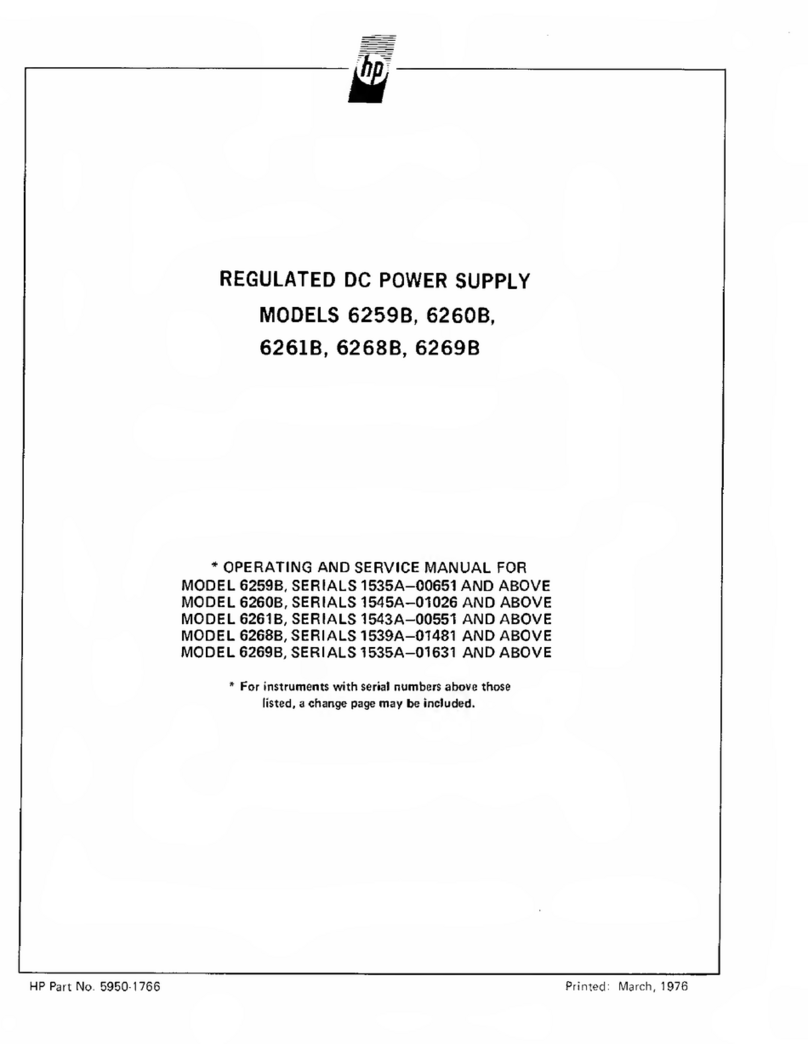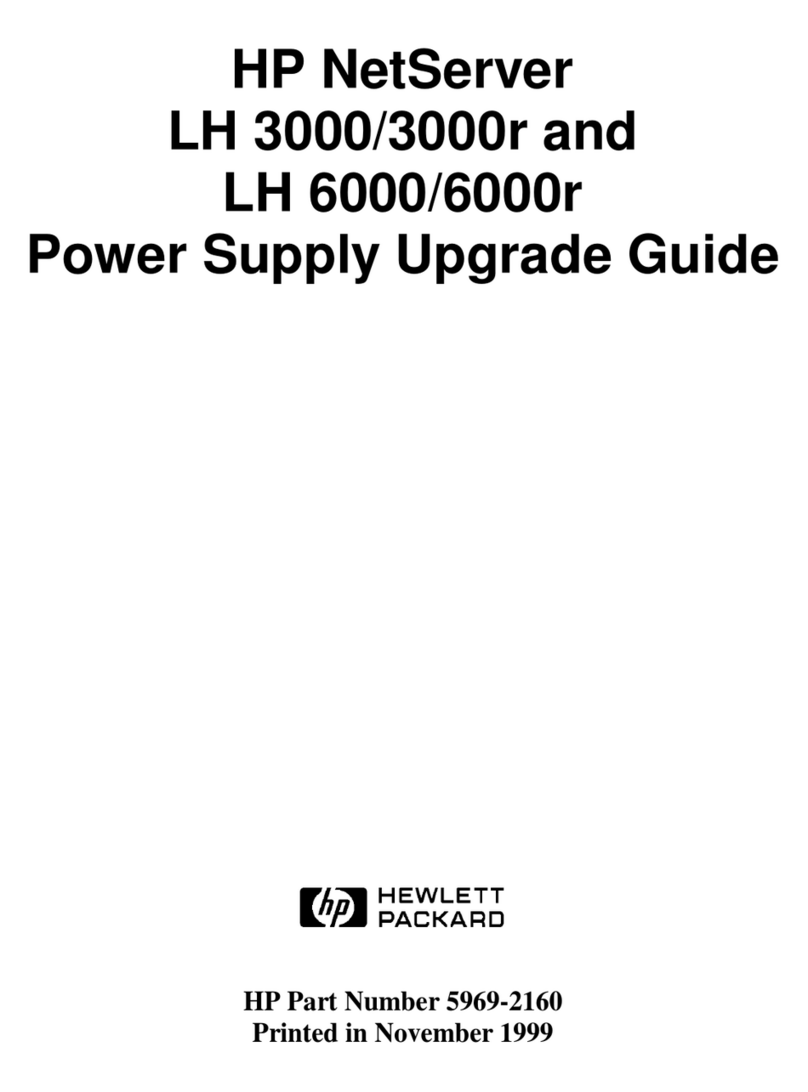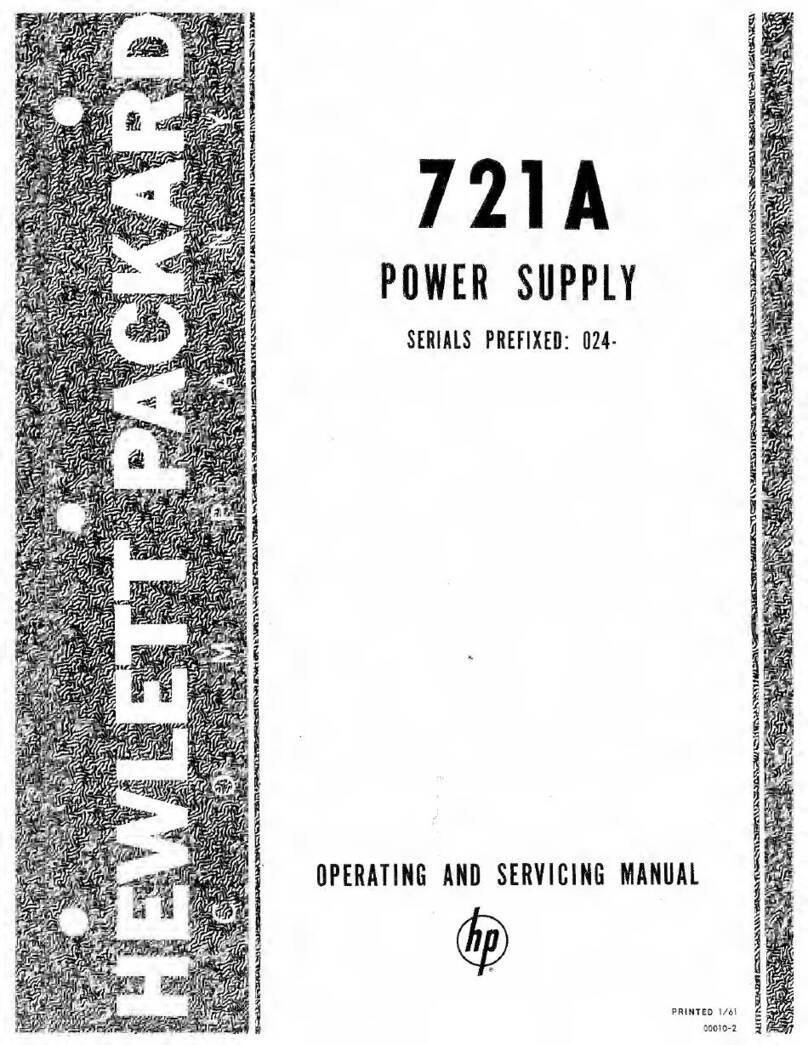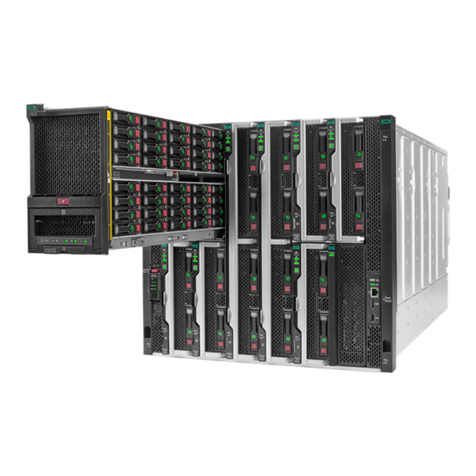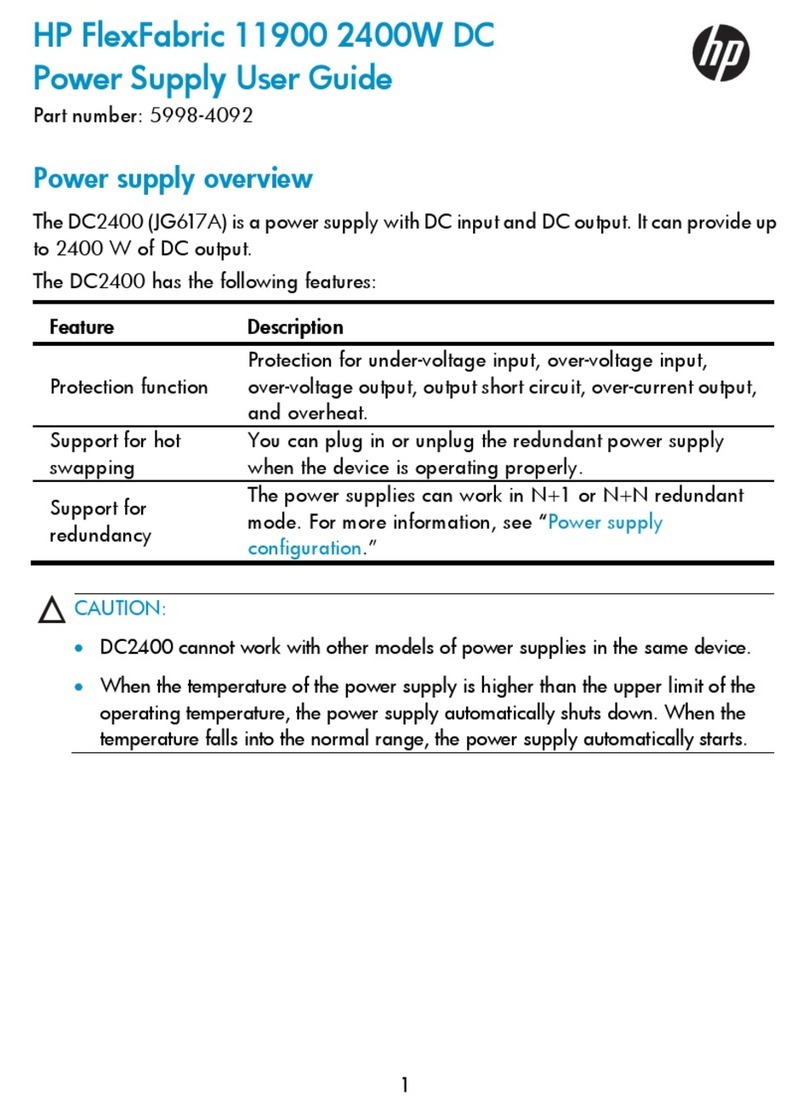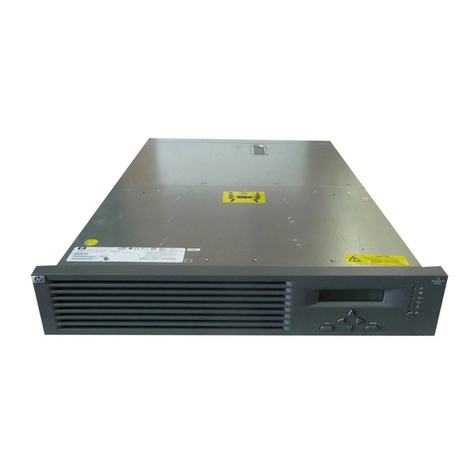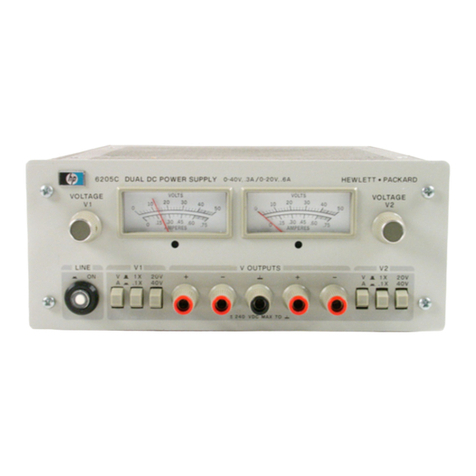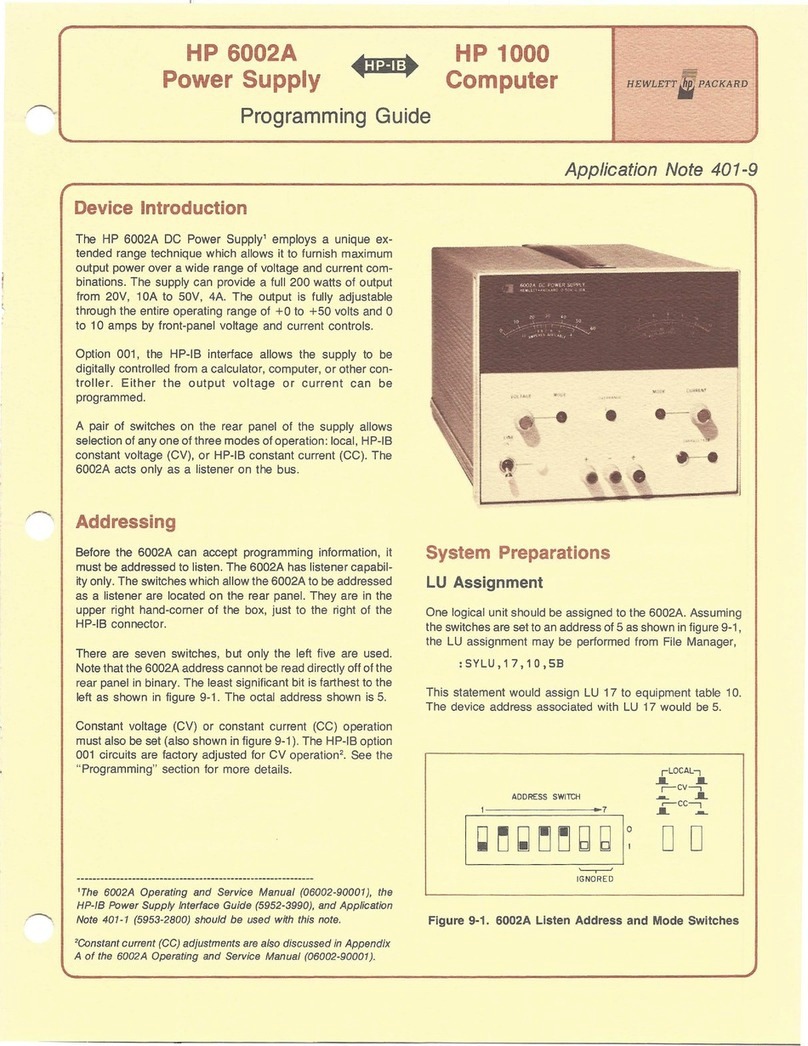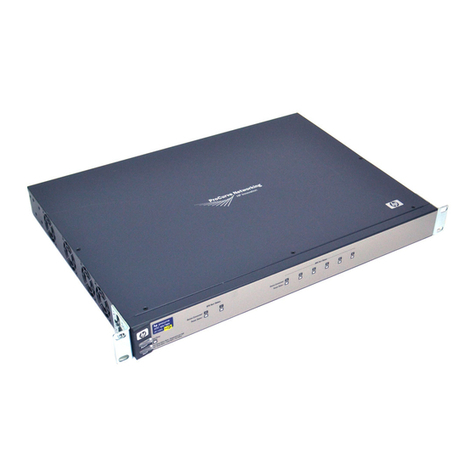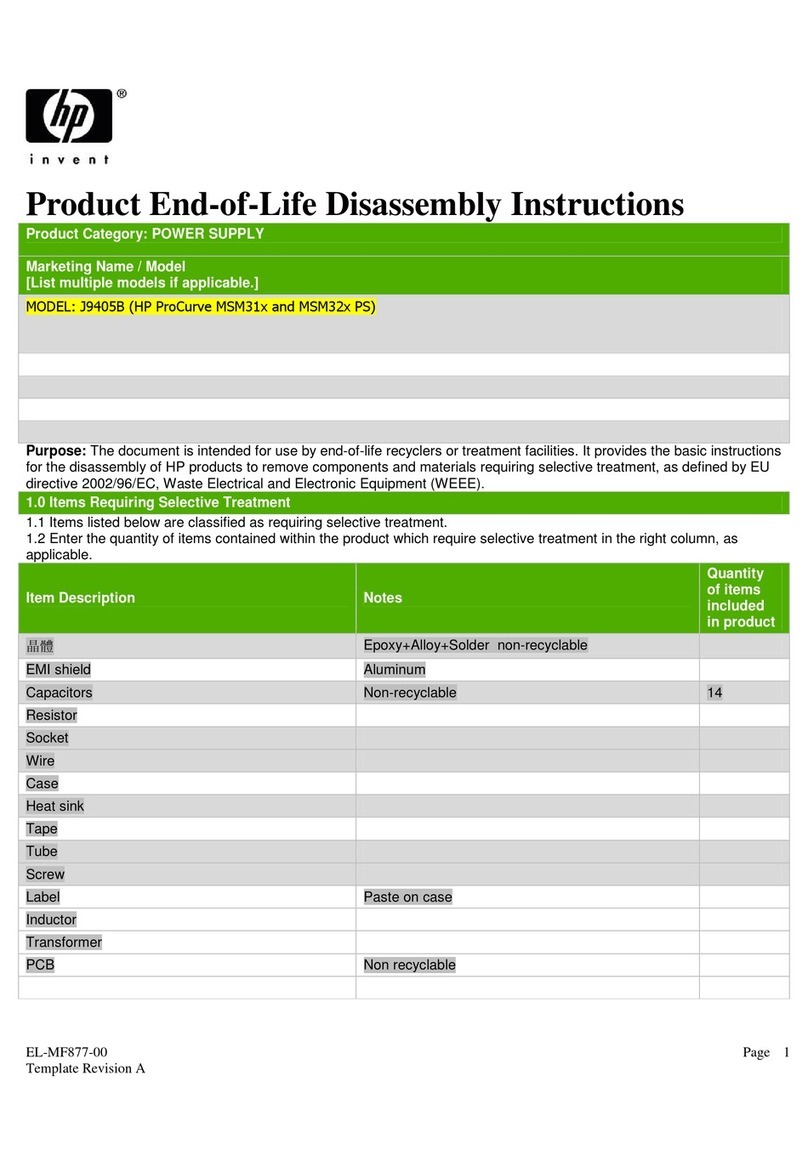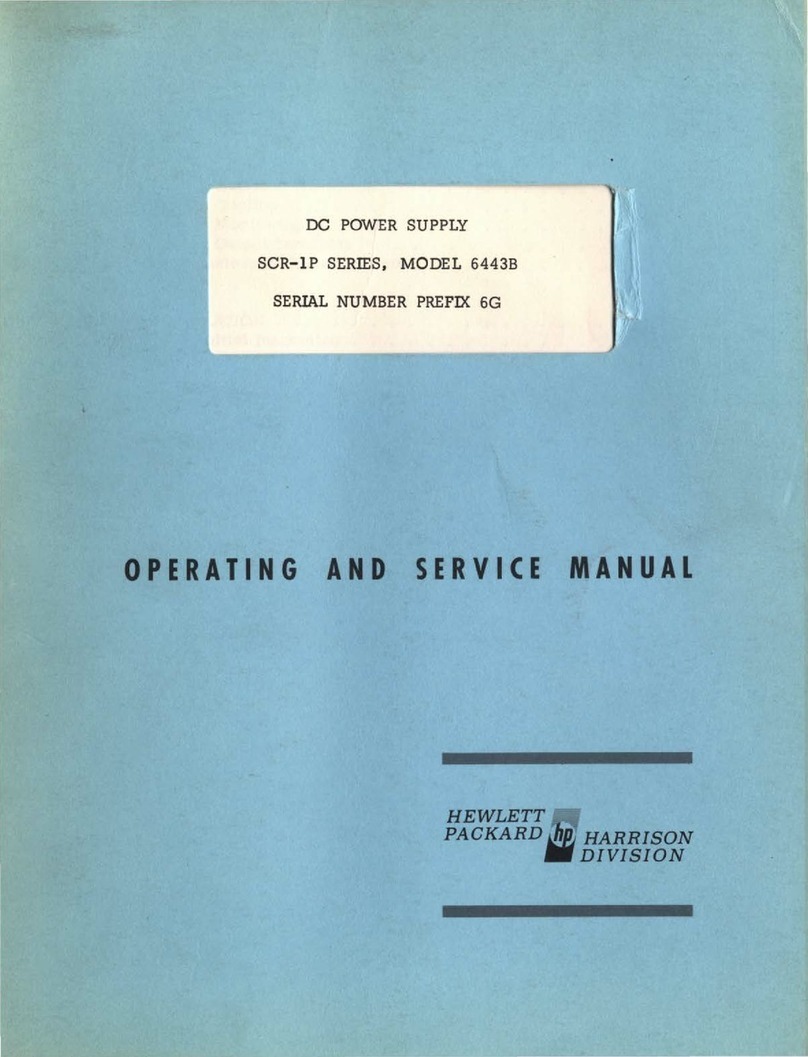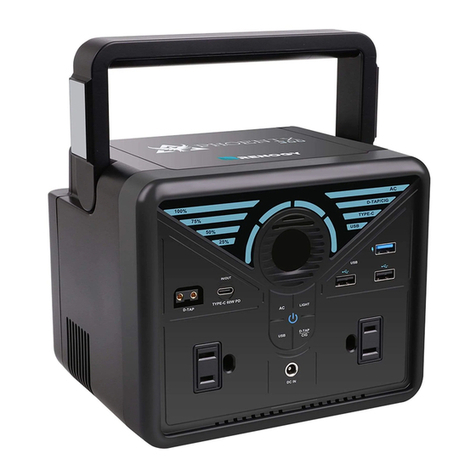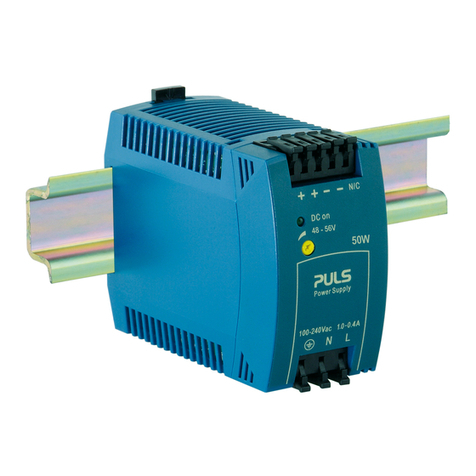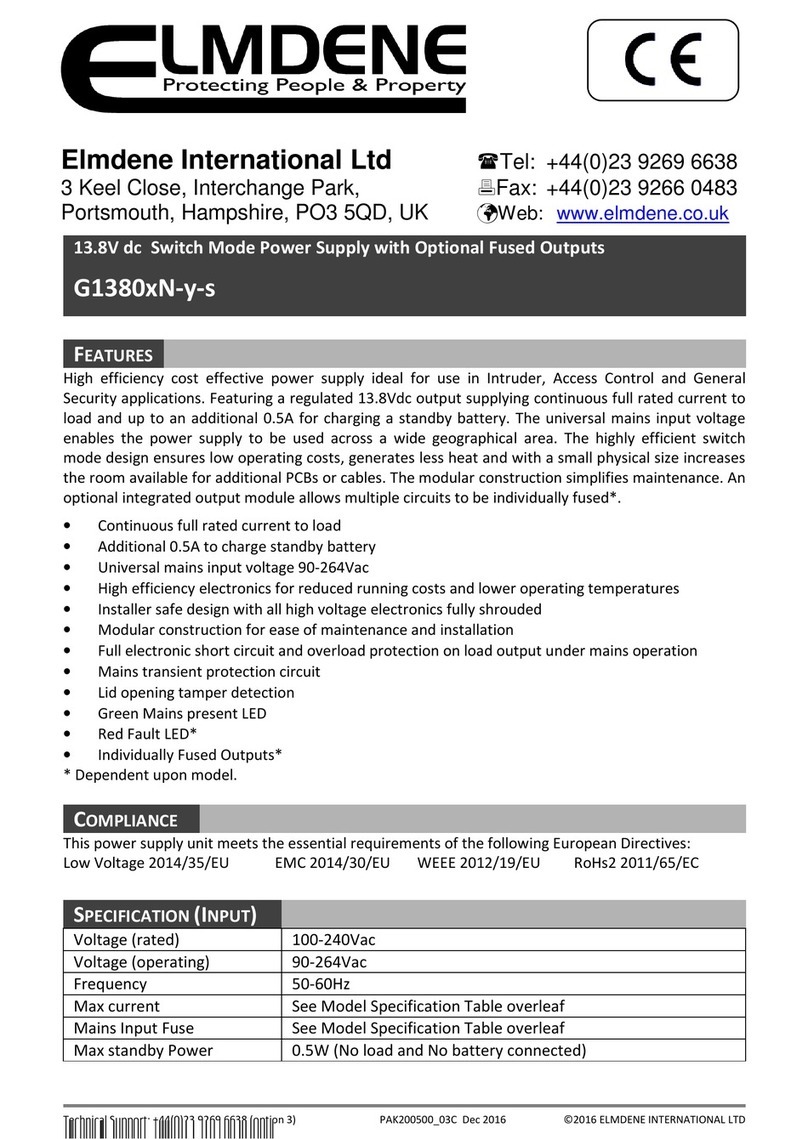
SECTION I
GENERAL INFORMATION
1-1
DESCRIPTION 1-9 OUTPUT TERMINALS
1-2 This instrument (Figure
1-1)
is
an all semi-
conductor high voltage supply suitable for either
bench or relay rack operation. It
is
a compact,
well-regulated. Constant ~oltage/CurrentLimited
supply that will furnish 3, 000 volts at 6 milliamps
or can be adjusted throughout the output voltage
range. It
is
designed for applications requiring
extreme stability, regulation, and insensitivity to
ambient temperature variations.
1-3 This supply utilizes a series regulated
"piggy-back" circuit technique that consists of
placing a well-regulated low voltage power supply
in series with a
less
well-regulated supply having
a greater voltage capability. The well-regulated
"piggy-back" supply continuously compensates for
any ripple, load regulation, or line regulation de-
ficiencies of the main power source and adjusts
the voltage across its series regulator sothat the
total output voltage remains constant despite dis-
turbances in the main voltage source.
1
-4 OVERLOAD PROTECTION
1-5 The voltage thumbwheel switches select the
constant voltage level; an internal potentiometer
selects the current limit level. The supply will
automatically crossover from constant voltage to
current limit operation and vice versa if the output
current or voltage exceeds these preset levels.
Detailed characteristics of the output current lim-
iting are given in Paragraph 3-5.
1-6 The power supply
is
protected from reverse
voltage (positive voltage applied to negative ter-
minal) by an internal protection diode that shunts
current across the output terminals when this con-
dition exists, clamping the reverse voltage. Pro-
tection from reverse current (current forced into
the power supply in the direction opposite to the
output current) must be provided by preloading the
power supply (Paragraph 3-15). The power supply
cannot accept reverse current without damage.
1-7 COOLING
1-8 Convection cooling
is
used; no fan
is
re-
quired. The power supply has no moving parts
except for the meter movement.
1-10 Output power
is
available via two UG-931/U
connectors mounted on the front panel of the sup-
ply. Mating connectors (UG-932/U) are supplied
with the unit. The output terminals are isolated
from the chassis and either the positive or the neg-
ative terminal may be connected to the chassis by
shorting the center pin to the case of the applica-
ble ~G-931/~connector, or by grounding a wire
from the connector to the chassis. The power sup-
ply
is
insulated to permit operation up to 1,000
volts dc off ground,
i.
e.
the maximum potential
between either output terminal and ground shall not
exceed 4KVdc.
1-11
SPECIFICATIONS
1-12 Detailed specifications for the power supply
are given in Table
1-1.
1-13 OPTIONS
1-14 Options are factory modifications of a stand-
ard instrument that are requested by the customer.
The following options are available for the instru-
ment covered by this manual. Where necessary,
detailed option information (operation, alignment,
etc.
)
is
included throughout the manual.
Option No. Description
50Hz Input Modification. Factory
modification includes the substitution
of 60Hz with 50Hz magnetic compo-
nent as indicated at the end of the
parts list in Section VI. In addition,
the overvoltage protection adjustment
is
rechecked, refer to Section
V.
230Vac &lo%. Sinqle-Phase Input.
Factory modification includes the in-
stallation of a 230 volt input trans-
former to replace the standard 115volt
transformers as indicated at the rear
of the parts list in Section VI.
1-15 ACCESSORIES
1-16 The accessories listed in the following chart
may be ordered with the power supply or separately
